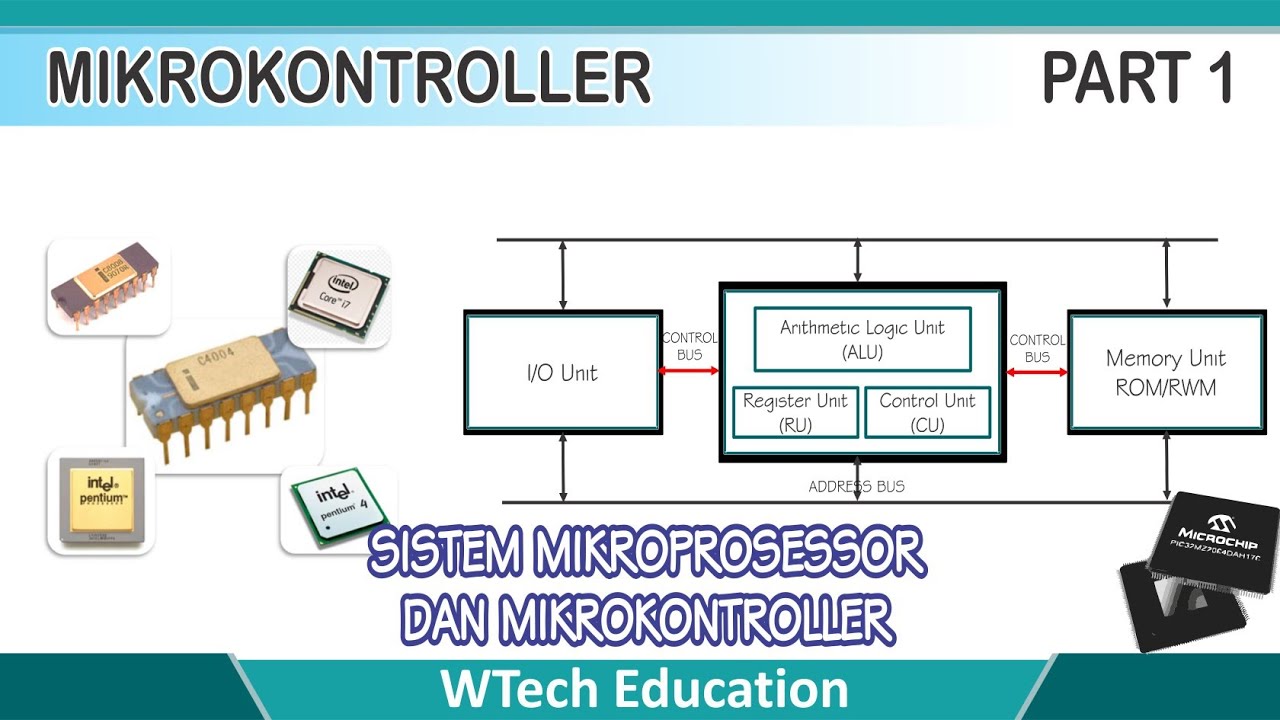Mengenal Microcontroller | Basic Knowledge
Summary
TLDRThe video explains the concept of microcontrollers, highlighting their evolution from the first microcontroller created in 1974 by Texas Instruments. Unlike microprocessors, microcontrollers include not only a processor core but also memory and I/O interfaces. The video further details the components necessary for a microcontroller to function, such as the power circuit, clock, and reset circuit. It also mentions the flexibility of microcontroller programming and the ease with which modern boards like Arduino, Raspberry Pi, and Adafruit are accessible. The video concludes by emphasizing how microcontrollers have revolutionized electronics, making it possible for even young enthusiasts to create robots and electronic devices.
Takeaways
- 😀 Microcontrollers are small computers embedded on a chip, also known as system-on-chip (SoC), containing a processor core, memory, and I/O interfaces.
- 😀 The main difference between microcontrollers and microprocessors is that microcontrollers include memory and I/O interfaces, whereas microprocessors only have the processor core.
- 😀 Texas Instruments introduced the first microcontroller in 1974 with the TMS-1000 series, a 4-bit computer embedded in a chip.
- 😀 Microcontrollers have evolved significantly, with the smallest microcontroller today being only 1.05 mm in size, smaller than a grain of rice.
- 😀 The microcontroller needs additional components like the minimum system (Sismin) to function properly. Sismin includes power circuits, clocks, reset circuits, and programming chips.
- 😀 A microcontroller can be reprogrammed multiple times, unlike microprocessors, which typically cannot be rewritten.
- 😀 Programming microcontrollers can be done using basic languages like C, assembler, or other languages, which are translated into machine code stored on the microcontroller.
- 😀 Modern microcontrollers come with extensive built-in peripherals like Ethernet ports, serial ports, and external memory slots, offering more functionality than ever before.
- 😀 Popular microcontroller boards like Arduino, Raspberry Pi, and Adafruit have made it easier for people of all ages to create electronic devices and robots.
- 😀 The rise of digitalization has made designing electronic devices more accessible, even to young children or beginners, not just experts in electronics.
- 😀 Microcontrollers have revolutionized electronics, moving from analog circuits to digital systems, making it simpler to create complex electronic devices.
Q & A
What is a microcontroller?
-A microcontroller is a small computer embedded on a chip, or a system-on-chip, that includes a processor core, memory, and I/O interfaces, making it different from a microprocessor, which only contains the processor core.
What is the main difference between a microcontroller and a microprocessor?
-The main difference is that a microcontroller includes not only a processor core but also memory and I/O interfaces, whereas a microprocessor only contains the processor core.
When was the first microcontroller created and by whom?
-The first microcontroller was created in 1974 by Texas Instruments, specifically the TMS-1000 series.
What were the features of the first microcontroller, the TMS-1000?
-The TMS-1000 was a 4-bit computer embedded in a chip, equipped with RAM and ROM, and was about the size of a pencil eraser.
How small can modern microcontrollers be?
-Modern microcontrollers can be as small as 1.05 mm, about the size of a grain of rice.
What is a 'minimum system' (Sismin) in relation to microcontrollers?
-A minimum system (Sismin) is a set of components that work together with a microcontroller to ensure it operates properly. This system typically includes a power circuit, clock, reset circuit, and a programmer chip.
What tasks do the components of a minimum system (Sismin) perform?
-The power circuit supplies electricity, the clock provides digital pulses, the reset circuit handles program resets in case of malfunctions, and the programming chip is used to write programs onto the microcontroller.
Can you modify a microcontroller program after it's written?
-Yes, unlike microprocessors, microcontrollers can be reprogrammed repeatedly to change their functionality.
Which programming languages can be used to write programs for microcontrollers?
-Programs for microcontrollers can be written in languages such as Basic, C, and Assembler.
What are some examples of popular microcontroller boards available today?
-Popular microcontroller boards include Arduino, Raspberry Pi, and Adafruit, among others.
Outlines

このセクションは有料ユーザー限定です。 アクセスするには、アップグレードをお願いします。
今すぐアップグレードMindmap

このセクションは有料ユーザー限定です。 アクセスするには、アップグレードをお願いします。
今すぐアップグレードKeywords

このセクションは有料ユーザー限定です。 アクセスするには、アップグレードをお願いします。
今すぐアップグレードHighlights

このセクションは有料ユーザー限定です。 アクセスするには、アップグレードをお願いします。
今すぐアップグレードTranscripts

このセクションは有料ユーザー限定です。 アクセスするには、アップグレードをお願いします。
今すぐアップグレード5.0 / 5 (0 votes)






